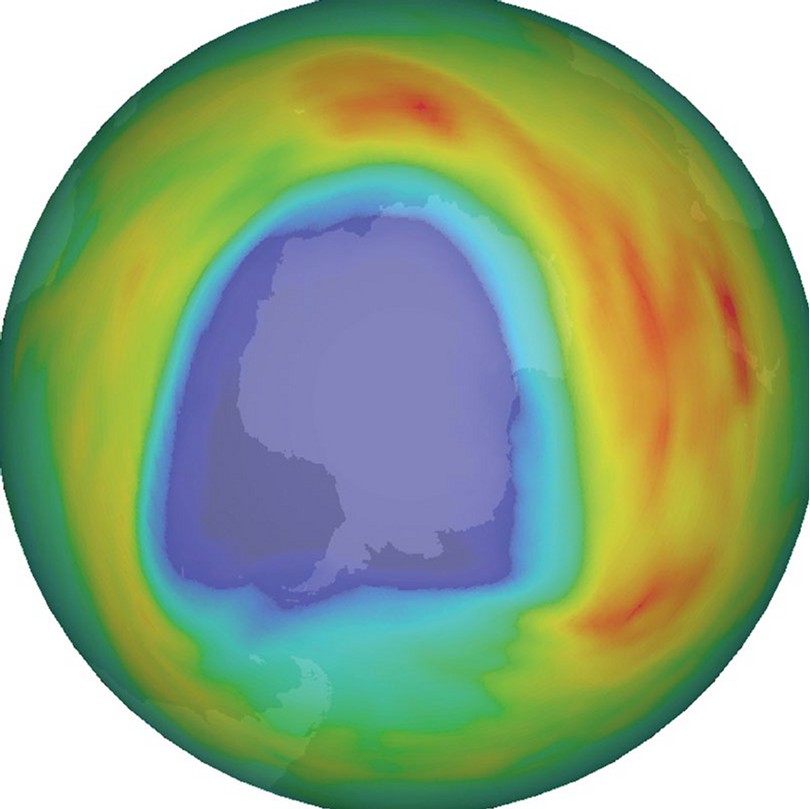
The ozone hole above the South Pole on 7 October 2008
© KNMI/ESA
In the 1920s, early versions of the modern-day fridge used refrigerants called chlorofluorocarbons (CFCs). These compounds offered a safer alternative to the flammable and toxic chemicals that had been previously used. Although safer in terms of preserving human health, their environmental impacts were catastrophic. Upon release from damaged or discarded refrigerators, CFCs have a nasty tendency to react with oxygen molecules in the ozone and cause holes in it. The ozone is crucial in protecting life on Earth from deadly ultraviolet radiation from the Sun. Having discovered the environmental cost of using CFCs, from 1974 large parts of the world began banning their use. Currently 197 countries hold the ban. Refrigerator engineers turned to a less damaging compound called hydrofluorocarbons (HFCs), which remain in common use in fridge production.